Samples of Drawings or Designs to Trace Onto Art Tiles Black Carbon Paper
This commodity explains how to use a charcoal pencil (or graphite pencil) to color the back side of a paper pattern and then trace over the design firmly to transfer it to a plywood mosaic backer board.
I have written a dissever article explaining why tracing borrowed images is meliorate than drawing for making patterns for small mosaics -even when the purpose is to create original artwork.
If your backer is much larger than your pattern, you tin overstate the pattern by transferring information technology to the backer using the grid method of pattern transfer instead of the method I explain here.
Example Using 6×six Inch Backer
In this example, I apply the half-dozen×six-Inch Plywood Mosaic Backer Lath nosotros sell at our online shop and a detail cropped from Franz Marc'south fauvist painting "The Big Blood-red Horses."
[caption id="attachment_1471" align="aligncenter" width="600"]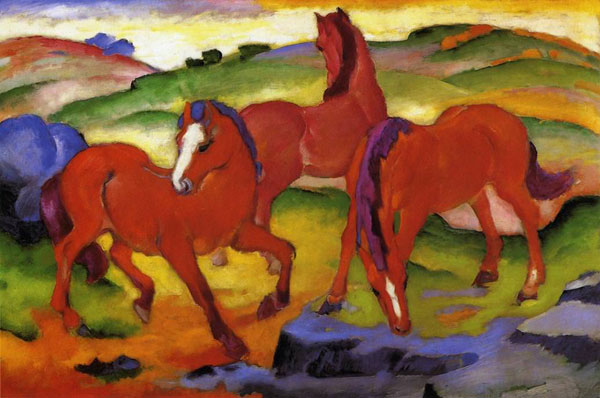 Large Red Horses fauvist painting by Franz Marc includes a prancing horse that is rich with curves that suggest movement.[/caption]
Large Red Horses fauvist painting by Franz Marc includes a prancing horse that is rich with curves that suggest movement.[/caption]
Step 1. Observe And Brand Your Design
I used Photoshop to crop and size the epitome and convert it to a black and white, simply y'all can also utilize photocopies from books and your own drawings equally starting points. Read more than about this process in my article How To Make Mosaic Patterns Without Drawing.
Note that the paradigm was sized so that it was vi×6 inches and printed out on regular printer paper.
The Purpose Of The Pattern
For small mosaic icons and tabletops, y'all can work directly on the surface. Simply draw or transfer your design onto the backer. This pattern should expect something like the black line cartoon from a coloring book, but a map showing the outlines of different colored areas, peradventure subdivided to show shading. (Shading and variation in these different color regions can be worked out when you outset placing the tile, and so your pattern tin be equally simple equally a drawing outline.)
[caption id="attachment_1473" align="aligncenter" width="600"]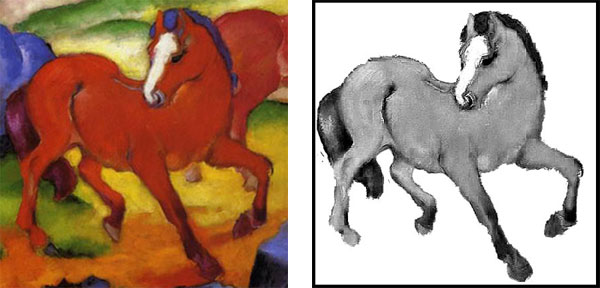 Photoshop was used to crop out a detail of the painting and convert it to a black and white image that emphasizes outlines. I also added a edge to mark the 6-inch ten 6-inch space to make it easy to line up the paper on the backer board. The outlines of the black and white paradigm are what we will transfer to the forest mosaic capitalist.[/caption]
Photoshop was used to crop out a detail of the painting and convert it to a black and white image that emphasizes outlines. I also added a edge to mark the 6-inch ten 6-inch space to make it easy to line up the paper on the backer board. The outlines of the black and white paradigm are what we will transfer to the forest mosaic capitalist.[/caption]
Step two. Fold The Pattern Effectually The Backer Board
Fold the paper design around the backer board so that the paradigm of your figure is centered on the board. Having a edge drawn the aforementioned size as the backer lath helps you line it upwards.
[explanation id="attachment_1478" align="aligncenter" width="600"]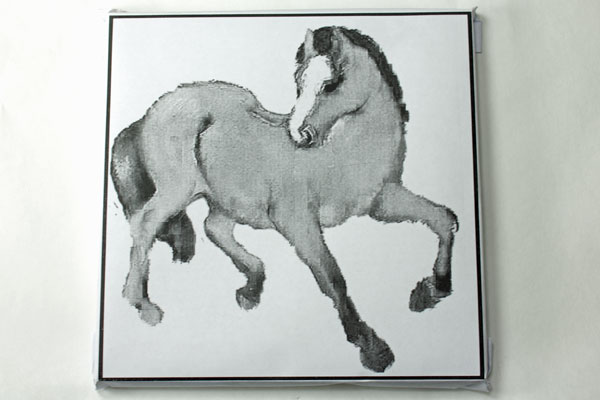 Fold your mosaic design around the backer lath so that the image is centered. Note that my pattern should accept centered the horse improve in the square so that the tail isn't so close to the edge. If the pattern transfers equally shown, it will be difficult to render that part in tile, and i volition demand to make the tail slightly thinner then that I can put some background around it because tile tin can simply be cut so thin.[/caption]
Fold your mosaic design around the backer lath so that the image is centered. Note that my pattern should accept centered the horse improve in the square so that the tail isn't so close to the edge. If the pattern transfers equally shown, it will be difficult to render that part in tile, and i volition demand to make the tail slightly thinner then that I can put some background around it because tile tin can simply be cut so thin.[/caption]
Step 3. Unfold The Pattern And Remove Board
[caption id="attachment_1477" marshal="aligncenter" width="600"]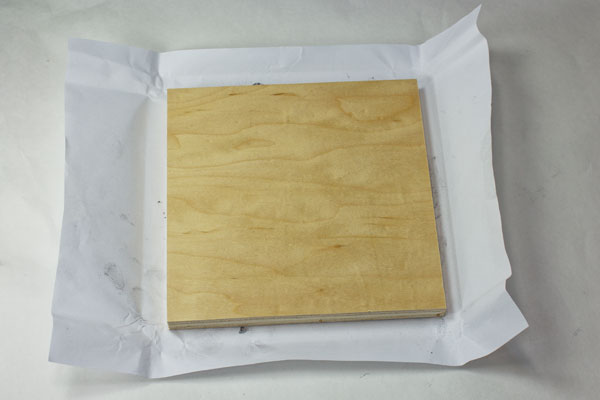 Unfold the mosaic pattern and remove the backer lath. The folding was only washed to go the paper creased at the edges of the blueprint.[/explanation]
Unfold the mosaic pattern and remove the backer lath. The folding was only washed to go the paper creased at the edges of the blueprint.[/explanation]
Pace 4. Rub Outlines Of Pattern With Charcoal Or Pencil
[caption id="attachment_1479" align="aligncenter" width="600"]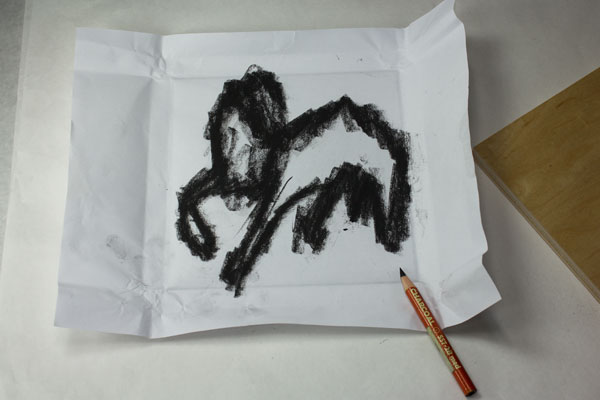 Rub the outlines of the figure with a charcoal pencil (preferred) or a regular graphite pencil. Note that we are rubbing the Back of the pattern not the front end. Color every line that will need to be transferred.[/explanation]
Rub the outlines of the figure with a charcoal pencil (preferred) or a regular graphite pencil. Note that we are rubbing the Back of the pattern not the front end. Color every line that will need to be transferred.[/explanation]
*** FOR MOSAIC PATTERNS THAT SHOW EVERY TILE AND Take LOTS OF LINES, YOU MAY FIND It EASIER TO USE CARBON Newspaper INSTEAD OF RUBBING THE Back OF THE Pattern WITH CHARCOAL. ***
Step 5. Refold The Pattern Around The Lath And Tape
[explanation id="attachment_1480" align="aligncenter" width="600"]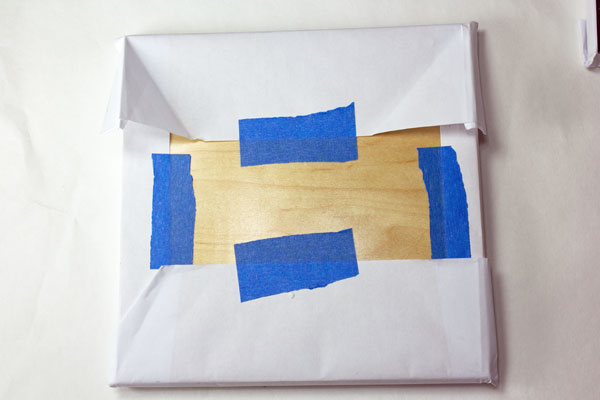 Refold the mosaic blueprint around the capitalist board and tape information technology in place, preferably with some piece of cake to remove painter's tape. The creases in the prefolded paper made it piece of cake to line the pattern up without smearing the charcoal all over the wood. Annotation that the tape goes on the VARNISHED side of the wood. The charcoal pattern volition be transferred to the UNVARNISHED side.[/caption]
Refold the mosaic blueprint around the capitalist board and tape information technology in place, preferably with some piece of cake to remove painter's tape. The creases in the prefolded paper made it piece of cake to line the pattern up without smearing the charcoal all over the wood. Annotation that the tape goes on the VARNISHED side of the wood. The charcoal pattern volition be transferred to the UNVARNISHED side.[/caption]
Stride 6. Trace The Blueprint Firmly
[caption id="attachment_1482" align="aligncenter" width="600"]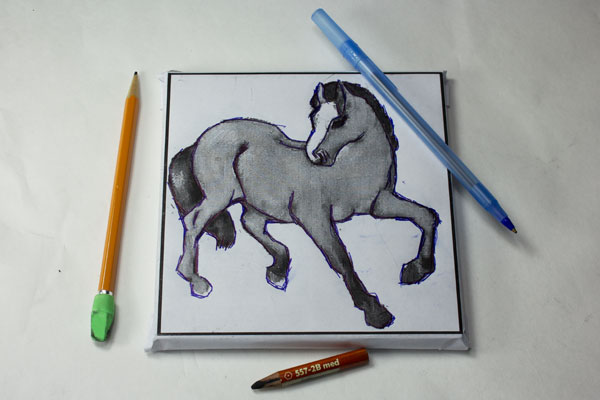 Trace the outlines of the figure firmly with a ballpoint pen or a pencil that is more dull than sharp. You want to press firmly so that the charcoal on the back of the paper blueprint is transferred to the wood, but yous don't want to rip the paper. Avoid getting the paper boiling or wet for this reason. Brand sure y'all trace all the lines (curves) you would similar to meet on your backer.[/caption]
Trace the outlines of the figure firmly with a ballpoint pen or a pencil that is more dull than sharp. You want to press firmly so that the charcoal on the back of the paper blueprint is transferred to the wood, but yous don't want to rip the paper. Avoid getting the paper boiling or wet for this reason. Brand sure y'all trace all the lines (curves) you would similar to meet on your backer.[/caption]
Pace seven. Remove The Paper And Make full In Missing Lines
[caption id="attachment_1483" align="aligncenter" width="600"]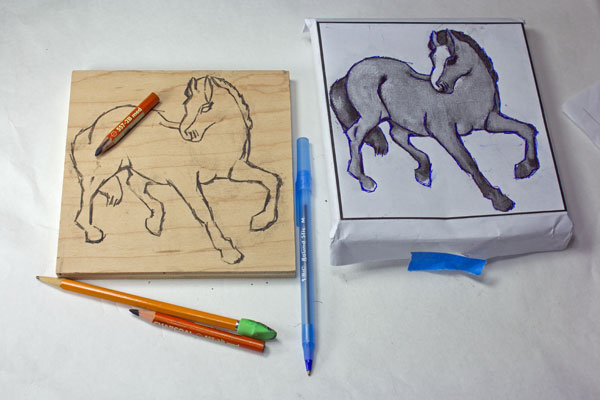 When you remove the newspaper pattern, you will notice small-scale places where the lines (curves) of the design didn't get transferred for any reason, unremarkably because you forgot to trace there or sometimes considering you didn't put charcoal in those places. You tin prepare those by drawing the missing lines. Information technology is easy to exercise even if you have little confidence in your power to draw because the existing lines requite you a frame of reference.[/caption]
When you remove the newspaper pattern, you will notice small-scale places where the lines (curves) of the design didn't get transferred for any reason, unremarkably because you forgot to trace there or sometimes considering you didn't put charcoal in those places. You tin prepare those by drawing the missing lines. Information technology is easy to exercise even if you have little confidence in your power to draw because the existing lines requite you a frame of reference.[/caption]
Footstep 8. Make The Lines Permanent With A Marker
[caption id="attachment_1484" align="aligncenter" width="600"]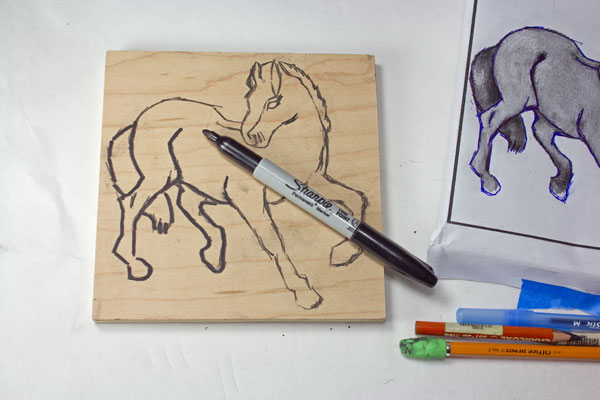 Make the lines of your transferred patterns permanent using a fine-tip marking such every bit the Sharpie brand. If y'all don't exercise this step, then your hands and glue will quickly rub off the pattern.[/caption]
Make the lines of your transferred patterns permanent using a fine-tip marking such every bit the Sharpie brand. If y'all don't exercise this step, then your hands and glue will quickly rub off the pattern.[/caption]
Ready For Indoor Employ
[caption id="attachment_1485" align="aligncenter" width="600"]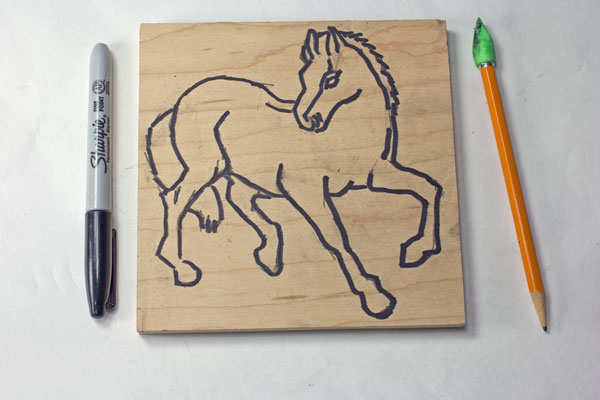 The Mosaic pattern is transferred ready for tiling. This is a dry indoor mosaic, and so the tile can be attached with Weldbond Agglutinative. For outdoor and wet mosaics. a concrete stepping stone or piece of flagstone could be used for a backer and the tiles mounted with thinset mortar.[/caption]
The Mosaic pattern is transferred ready for tiling. This is a dry indoor mosaic, and so the tile can be attached with Weldbond Agglutinative. For outdoor and wet mosaics. a concrete stepping stone or piece of flagstone could be used for a backer and the tiles mounted with thinset mortar.[/caption]
Variations On This Method
There are a couple of parts of this method that could take been done through culling means:
- Instead of folding the paper pattern around the backer, it could accept been cut to the size of the backer and taped on that fashion.
- Instead for rubbing charcoal or graphite pencil on the back of the design, carbon tracing paper could have been used.
Source: https://blog.mosaicartsupply.com/how-to-transfer-mosaic-patterns-quickly-by-tracing/
0 Response to "Samples of Drawings or Designs to Trace Onto Art Tiles Black Carbon Paper"
Post a Comment